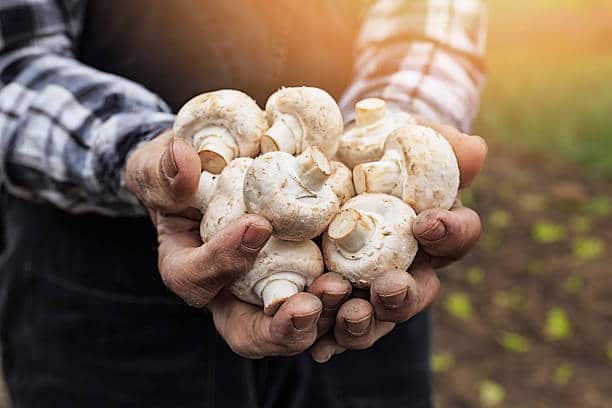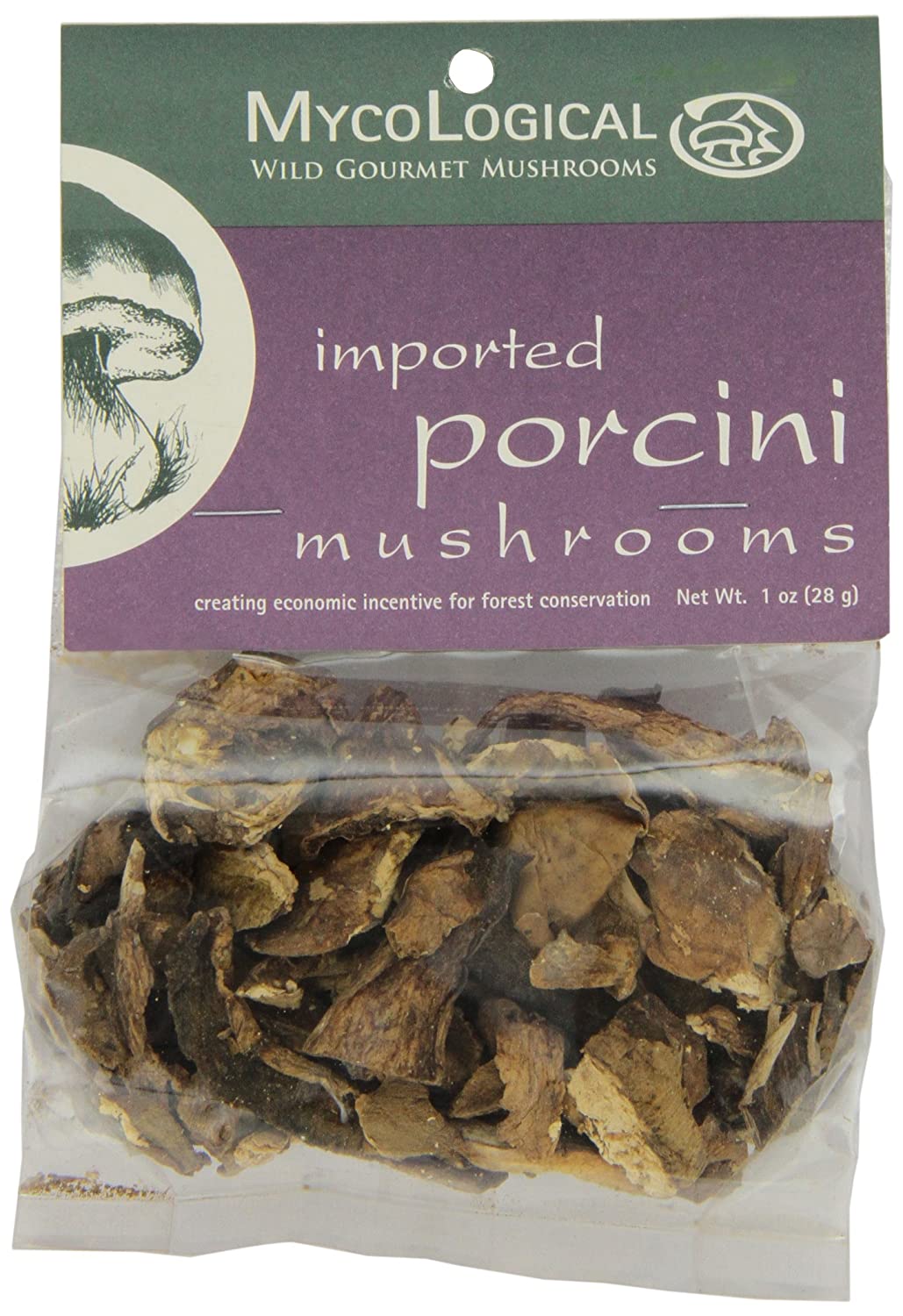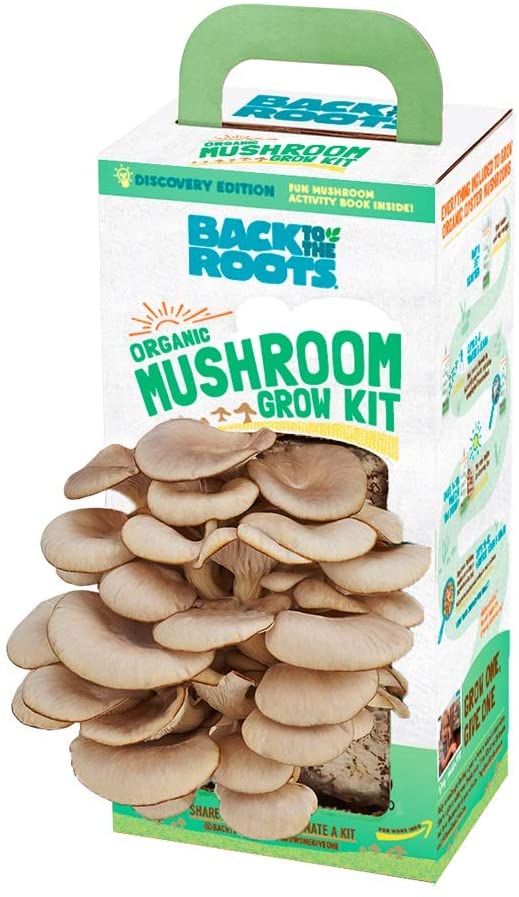15 Different Types of Edible Mushrooms

How do you like your mushrooms?
Baked, grilled, roasted, added to stir-fries and soups? That’s how versatile mushrooms are.
You know you can get edible mushrooms in a grocery store instead of foraging. If you have some growing in the woods where you run or hike, you’ll have to learn how to tell different types of mushrooms before you pluck them to savor at home.
That’s what we’ll do today. We’ll look at:
Table of Contents
15 Most Popular Edible Mushrooms
1. Button Mushrooms

They are the most popular variety in the market, one with numerous recipes in most cookbooks. They have short stems and caps of about 3 inches (7 cm) in diameter. Further, the fresh ones have spongy smooth caps with brownish gills.
Button mushrooms are slightly chewy, but you’ll love their faint, earthy flavor. Loved for their mild taste, you can add button mushrooms to salads or cook them in soups. They are among the ingredients in creamy beef stroganoff and mushroom risotto.
These mushrooms are rich in zinc, vitamin D, potassium, among other antioxidants and minerals.
2. Portobello Mushrooms

These mushrooms are a suitable substitute for meat, so they are popular with vegetarians. You’re more likely to taste these mushrooms in Italian cuisine—in sauces and pasta. You can also grill them as they have a firm texture.
Though they’ll not give you a high dose of vitamin D like other mushrooms, you’ll get riboflavin instead, which is essential in turning carbohydrates into energy. These mushrooms also contain an acid that inhibits the protein responsible for estrogen production. Hence, they have the potential to inhibit breast cancer.
3. Shiitake Mushrooms

Shiitake is among the top choices for a home mushroom garden. They grow in oak logs, and they have a woody flavor when cooked. When you come across them in the wild, you’ll know you’re looking at shiitake mushrooms if they have a distinct brown cap curled downward like the canopy of an umbrella.
4. Maitake Mushrooms
Like the shiitake variety above, you can farm maitake mushrooms at home or gather some in the wild. You’ll have an easy time telling them apart for their characteristic cap that resembles the heads of cruciferous vegetables.
Maitake mushrooms will give your dish an earthy flavor with hints of game meat. Since they mature into large, tough mushrooms, harvest them young.
5. Chanterelle Mushrooms
Another name for them is egg mushrooms, probably because of their appealing egg-yellow color. Unlike the usual long stem and a cap, these mushrooms resemble trumpets. We can stay they are first on the popularity list of wild mushrooms and top five in the best edible mushrooms.
However, they are not as easy to plant at home, like shiitake or oyster mushrooms. So if you’d like to sample some, you have to forage in mossy-coniferous vegetation. While at it, ensure you can differentiate chanterelles from the poisonous Omphalotus olearius.
6. Morel Mushrooms
Unless you already know morels, you’ll not know they are mushrooms when you see them the first time. They don’t have the characteristic umbrella shape. Instead of a round cap, theirs is a triangular one with the appearance of a honeycomb.
But these mushrooms aren’t the only ones with that shape. No! You may mistake them with the poisonous Verpa bohemica or the Gyromitra esculenta. Morels are expensive because they are not easy to forage like other wild mushrooms. However, the effort pays as they are rich in proteins, potassium, copper, and zinc.
7. Porcini Mushrooms
They have a stout stem and a reddish cap that may grow to 12 inches (30 cm) in diameter. They are smooth when you taste them, with a characteristic woody flavor. However, raw porcini smells like sourdough. You’ll probably get them in dry form and rarely fresh.
Their nutritional value includes essentials like vitamins C & A, a reason to have them in mushroom soup or mushroom ravioli. Porcini mushrooms are sumptuous even when you add them to poached eggs.
8. Chicken of the Woods Mushrooms
The best way to describe these mushrooms is that they taste like chicken. But you have to pick them young or risk adding a woody taste to your recipe. Plus, they become bitter when they mature.
You can grow them on trunks and stumps, and some of their favorite trees are oaks, willow, and cherry. Their look-alikes are the blackening polypore and dryad’s saddle. Fortunately, these varieties are also edible.
Chicken of the wood mushrooms have a yellowish ivory color, and their caps resemble fans. When you look at their underside, you’ll notice tiny pores, not the usual white gills seen on most mushrooms.
They grow at the foot of hardwoods, and their characteristic bright color is easy to spot in a forest.
9. Wood Blewit Mushrooms
They grow to a height of about 4 inches (10 cm), and their convex caps start with a bluish color that fades to brown as they mature. Underneath, their gills are purplish.
Wood blewits grow in different habitats, which gives you a wide foraging range. For example, if you can’t find some in the woodland near you, check the grasslands. An edible look-alike is the Lepsita sordid.
10. Oyster Mushrooms
Wow! You need to see oyster mushrooms in a garden. Their caps resemble fans all joined to the stem. It’s no wonder the other name for these mushrooms is angel’s wings.
Oyster mushrooms are as popular in kitchens as button mushrooms. There might have been some in the last Japanese or Chinese soup you enjoyed.
11. Charcoal Burner Mushrooms
To enjoy the nutty taste of charcoal burner mushrooms, go foraging in beech woodlands. They have a thick stem, white gills, and caps that curve inward at the center. You’ll come across caps with varied colors from purple to brown and gray.
If you’d like to forage in beech woodlands, make sure you don’t confuse these mushrooms with others from the same category of Russulas. The best way to distinguish them is by feeling the gills, as the gills of charcoal burner mushrooms are flexible.
12. Caesar’s Mushrooms
Young Caesar’s mushrooms have a smooth egg shape that changes to a rounded cap of up to 6 inches (15 cm) in diameter at maturity. The gills have a faint yellowish color at maturity, and you’ll also notice their detachment from the stem.
Unlike most mushrooms, Caesar’s mushrooms sprout on the ground instead of growing on the trunk. Additionally, they lose moisture fast, so you have to cook them as soon as you harvest them.
13. Lion’s Mane Mushrooms
Their shape resembles their name. You may even assume it’s a pompom thrown on top of a tree trunk. Lion’s mane mushrooms have medicinal qualities, and they can grow on trunks 40 feet from the ground.
Commercially, they’re often available as supplements for mental clarity, focus, and cognition, just like this Lion’s Mane dietary supplement from Host Defense.
14. Giant Puffball Mushrooms
These mushrooms’ can grow to about 30 inches (80 cm) in width. Hence, you’ll identify them fast since they have no look-alikes. Their caps grow white and velvety, then turn smooth when they mature. Giant puffballs (Calvatia gigantea) don’t have a stem, which makes them resemble a soccer ball.
15. Cremini Mushrooms
These are young portobello mushrooms. You’ll probably confuse them with button mushrooms though they are darker. If you’d like a meaty dish, but without meat, this is the best alternative. They’ll give you various types of vitamin B and the conjugated linoleic acid we talked about in portobello mushrooms.
As we conclude this section, how many of these 15 mushrooms have you tried so far? If you said 10+, congratulations!
If you’re still learning how to forage for mushrooms, let’s look at:
How to Know If a Mushroom Is Edible or Poisonous
When you come across new mushrooms, identify them before you harvest them. The ones with white gills or a white stem might be the first to strike off your list of edible mushrooms as you risk consuming poisonous fungi like death cap and Amanita virosa.
Nevertheless, it doesn’t mean that all mushrooms with white gills are poisonous. When considering the color of the cap or stem, if it’s white, tanned, or brownish, it’s more likely edible as most poisonous ones come in red color.
The texture of the cap is another distinguishing feature. Most poisonous mushrooms have spotted or patched caps. The edible ones tend to have one cap only, so if there’s a ring that almost resembles a second cap, the mushrooms are most probably poisonous.
If you prefer wild mushrooms, instead of buying them from a store or growing them, do more than compare physical features. Get a mushroom guidebook or join a mycological group on social media. You’ll get many pictures to compare, learn tactics to use when you forage, know the locations of most wild mushrooms, and discover look-alikes.
Until you can confidently differentiate the edible wild mushrooms from the poisonous ones, you’ll assume that some are poisonous because they don’t have the characteristics of common edible types. For instance, giant puffball mushrooms lack the characteristic long stem of most mushrooms, and their caps look like popcorn, not the usual convex shape.
If you’re bent on exploring the different mushroom species, this guide will help you identify and gather mushrooms.
But, if you’d like to cultivate some mushrooms instead of foraging, here’s:
How to Choose a Mushroom Species to Grow at Home
There are about 200 species of mushrooms to cultivate at home. The most popular is the button mushroom.
So what should you consider?
First:
The Substrate Available
Mushroom substrates include logs, coffee grounds, and wheat straws. The substrate has to be suitable for the mushrooms you intend to grow and your environment.
For example, a bucket filled with coffee grounds needs less space than a 2-foot oak log. When looking at substrate options, oyster mushrooms are the best because they grow in many substrates.
You wish to grow some mushrooms:
Consumption or for Sale?
A commercial mushroom farm has to grow species needed in the market. Also, it would be a large-scale operation with a budget and a time frame. But, if you’re growing mushrooms for soups and stir-fries in your home, you’d not mind waiting six months to a year before you can harvest.
Also, think about:
Uses of Mushrooms
Some mushrooms are for culinary use only, others are for both culinary and medicinal use, and another group is famous for medicinal benefits. For example, shiitake and lion’s mane serve the two purposes, but reishi mushrooms offer medicinal benefits.
FAQs
What Are the Healthiest Mushrooms to Eat?
We’d have to list all the edible mushrooms here since each species brings its range of nutritional value. But, to mention a few, eating chanterelle boosts your metabolism thanks to its rich combination of vitamin B types. It also gives you fiber to improve your digestion and enriches your system with antioxidants and anti-microbial properties.
On the other hand, to regulate blood sugar, you’d need to add some maitake mushrooms to your meal. They also enhance the removal of abnormal cells so your immune system can function normally.
For prostate health, some button mushrooms are necessary. For anti-inflammatory properties, go for porcini mushrooms.
You’d also want to enjoy the health benefits of shiitake and oyster mushrooms as they are high in vitamin B and D, respectively. If your priority is getting some vitamin D, gather morels as they are the best source.
What Are the Tastiest Mushrooms?
Have you heard that mushrooms were the food of gods? Their myriad of flavors plus their nutritional value ranked them highly for vitality. Let’s agree that taste is relative in culinary matters. But, if you love chicken, your favorite will be chicken of the woods mushrooms because their texture and color resemble chicken.
Porcini and portobello also have a meaty texture. Other mushrooms famed for their taste include oyster mushrooms, shiitake, and button.
How Many Types of Mushrooms are Edible?
About 3,000 varieties are edible. However, there’s still ongoing research on types of fungi because it’s a large group of organisms, second in number to insects. Out of the total number of organisms classified as fungi, 14,000 are mushrooms.
Final Thoughts
Imagine eating something that tastes like chicken but without a high fat and cholesterol level? Mushrooms make it a reality. Even better, they come in dozens of flavors, colors, and textures. Some grow at home, while others, like morels, grow in forests.
In conclusion, when you forage, you ought to be 100% sure that the species you gather are edible. It’s almost impossible to do that by just looking at the color or the cap or the size of the stem, as some edible mushrooms have look-alikes.
Therefore, you’d need years of experience and an expert’s help. That makes it necessary to join other enthusiasts to learn how they started growing mushrooms or foraging.





